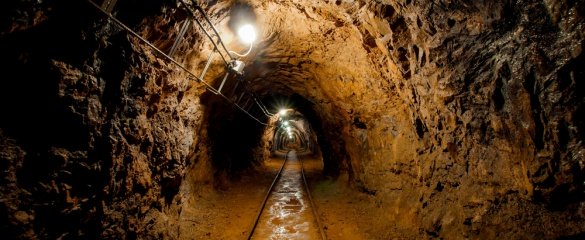By pulling metals out of mine wastewater and automating operations underground, researchers are helping minimise the environmental impact of mining.
Almost everything we use in our daily lives – clothes, paper, computers, phones, cars and even houses – would not be there without materials extracted from the earth.
One day, humans might be able to get nearly everything they need through recycling alone. Until then, however, mining will be essential.
‘Mining is inherently unsustainable because a limited resource is being depleted,’ said Dr Roel Meulepas from the Wetsus European centre of excellence for sustainable water technology in the Netherlands.
Dr Meulepas and his team are part of a research effort to make metal production more efficient and reduce the damage it causes to the environment.
They are focusing on removing and recovering metals from wastewater, specifically those that are currently not directly recovered, for example because their concentrations are too low.
If not removed, these metals can find their way into the local water reservoirs and end up inside organisms.
As part of the EU-funded BioElectroMET project, they are using the biological capacities of microorganisms to recover metals from waste or process water.
The BioElectroMET technology is similar to treatment processes that are already being used, says Dr Meulepas, but the key difference is that it uses biodegradable organic matter present in wastewater rather than electricity.
The electrochemical cell produces a current using bacteria. When the microorganisms present in the system respire, they produce electrons. Electrons from the anode move towards the cathode, creating a current.
The dissolved metals found in waste or process water are collected at the cathode in the form of pure elemental metals. At the anode, biodegradable organic matter present in wastewater are oxidised.
‘BioElectroMET is more resource-efficient than other removal technologies as it can use locally available electron donors as the energy source and recovers metals in elemental form,’ said Dr Meulepas.
This means that very little energy has to be put into the system in order to remove the dissolved waste metals.
But, to make mining more environmentally friendly, it’s also vital to cut down on the transportation of minerals and waste to and from the mine, and minimise the amount of equipment that must be installed above the ground.
That’s why the EU-funded I²Mine project is working to make mines safer and more efficient.
The project has found a way to cut down on the amount of material that needs transporting by minimising the amount of waste produced by the mine itself and by introducing ways for waste to be disposed of underground, meaning it does not have to be carried above the surface.
‘I²Mine has formulated a vision of the future underground mining and started to work on it,’ said project coordinator Dr Horst Hejny, from the Mineral Industry Research Organisation in Birmingham, UK.




